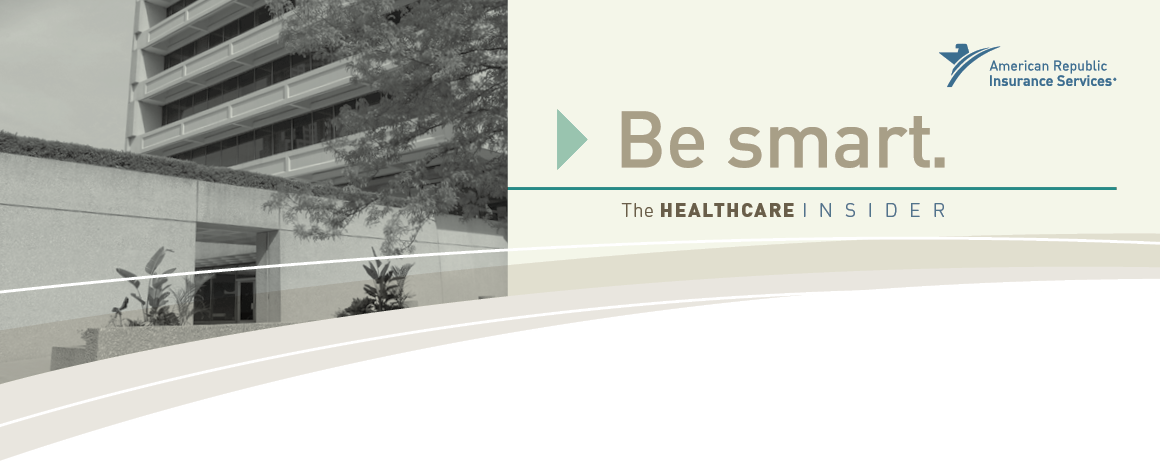

Articles in this section of the newsletter include questions from clients about a range of topics related to various types of insurance coverage they may have in retirement and how they work. These articles aim to help you Be smart about the choices you make when considering coverage options.
Many of Our Clients Ask:
"What is Extra Help and how do you qualify?"
 Extra Help, also referred to as the Low-Income Subsidy (LIS), is a Medicare program to help people with limited income and resources pay Medicare prescription drug program (Part D) costs like premiums, deductibles, and coinsurance. In 2017, if your monthly income is below $1,528 for singles ($2,050 for couples) and your assets are below specified limits, you may be eligible. Even if your income or assets are above the limit, you may still qualify for Extra Help because certain types of income and assets may not be counted. For example, if you are a homeowner, your house is exempt.
Extra Help, also referred to as the Low-Income Subsidy (LIS), is a Medicare program to help people with limited income and resources pay Medicare prescription drug program (Part D) costs like premiums, deductibles, and coinsurance. In 2017, if your monthly income is below $1,528 for singles ($2,050 for couples) and your assets are below specified limits, you may be eligible. Even if your income or assets are above the limit, you may still qualify for Extra Help because certain types of income and assets may not be counted. For example, if you are a homeowner, your house is exempt.
If you are approved for enrollment in a Medicare Savings Program (MSP), then you will be automatically enrolled in Extra Help. Your Extra Help benefits will have the same effective date as your MSP benefits.
If you do not qualify for an MSP, but you do qualify for Extra Help, you can apply through the Social Security Administration. You may qualify for full or partial Extra Help. With full Extra Help, you should pay no Part D premium as long as you choose a plan that offers basic coverage and has a premium at or below the Extra Help benchmark premium amount for your state. The benchmark amount varies by state. You will also pay no deductible and have low copays for your drugs. If you have partial Extra Help, in 2017, you will pay a share of your plan’s premium, an $82 deductible, and reduced coinsurance.
Resources
www.medicarerights.org/fliers/Help-With-Drug-Costs/Extra-Help-Chart.pdf?nrd=1
Not connected with or endorsed by the United States government or the Federal Medicare program.
“If I travel outside the US during retirement, will I be covered by Medicare?" - April 2017
"If I travel outside the United States during retirement,
will I be covered by Medicare?" After working hard for several years many retirees look forward to traveling and seeing the world. If an unfortunate accident or illness occurs while traveling it is important to be informed of your coverage. Here is an overview of Medicare and foreign travel so you feel secure during your travels.
After working hard for several years many retirees look forward to traveling and seeing the world. If an unfortunate accident or illness occurs while traveling it is important to be informed of your coverage. Here is an overview of Medicare and foreign travel so you feel secure during your travels.If you have Original Medicare, you can travel anywhere in the United States and its territories and get the medical care you need from any doctor or hospital that accepts Medicare. This includes all 50 states, the District of Columbia, Puerto Rico, the Virgin Islands, Guam, American Samoa, and the Northern Mariana Islands. Medicare, in most cases, does not cover medical care when you travel outside of the country.
However, standard Medigap Plans C, D, F, G, M, and N provide foreign travel emergency health care coverage when you travel outside the United States.* After you meet a $250 yearly deductible these plans pay 80% of the billed charges for certain medically necessary emergency care outside the United States if the care is needed in the first 60 days of each trip. Foreign travel emergency coverage with Medigap policies has a lifetime limit of $50,000.
Plans E, H, I, and J are no longer for sale, but if you bought one before June 1, 2010 you may keep it. All of these plans also provide foreign travel emergency health care coverage when you travel outside the United States.
We hope that emergency care is not needed while traveling, but if it is make sure to get copies of the itemized bills. When you return home your American Republic Insurance Services representative can help guide you through the claim process.
*In Wisconsin the Foreign Travel Rider must be selected.
Not connected with or endorsed by the United States government or the Federal Medicare program.
“What coverage does Medicare offer for Diabetes?" - January 2017
"What coverage does Medicare offer for Diabetes?"
 Medicare offers coverage for diabetes in different ways, depending on your need. According to the “Medicare and You” handbook, Medicare covers outpatient diabetes self-management training to teach you how to cope with and manage your diabetes. The program may include tips for eating healthy, being active, monitoring blood sugar, taking medication, and reducing risks. You must have diabetes and a written order from your doctor or other health care provider to receive this training. You pay 20% of the Medicare-approved amount, and the Part B deductible applies.
Medicare offers coverage for diabetes in different ways, depending on your need. According to the “Medicare and You” handbook, Medicare covers outpatient diabetes self-management training to teach you how to cope with and manage your diabetes. The program may include tips for eating healthy, being active, monitoring blood sugar, taking medication, and reducing risks. You must have diabetes and a written order from your doctor or other health care provider to receive this training. You pay 20% of the Medicare-approved amount, and the Part B deductible applies.
Medicare Part B covers certain diabetes supplies. This means that you must get a prescription from your doctor and use an appropriate supplier. Part B covers the following:You will pay 20 percent of the Medicare-approved amount that the Part B deductible applies and Medicare pays the remaining 80 percent of the cost.
Medicare prescription drug coverage (Part D) may cover insulin, certain medical supplies used to inject insulin (like syringes), and some oral diabetic drugs. Check with your plan for more information. You may need to use specific suppliers for some types of diabetic testing supplies. Visit Medicare.gov/supplierdirectory to find a list of suppliers in your area.
• Blood sugar control solutions
• Blood sugar test strips
• Lancet devices and lancets
• Insulin used with an external insulin pump
• Therapeutic shoes or inserts (in some cases)
Not connected with or endorsed by the United States government or the Federal Medicare program.
“How do I know which Preventive Services are covered by Medicare?" - October 2016
"How do I know which Preventive Services are covered by Medicare?"
 Medicare Part B offers several preventive services. There is no charge for these services if the doctor or health care provider accepts assignment. Scheduling a yearly “Wellness” visit will help determine the preventive services you are eligible for. According to the Centers for Medicare and Medicaid Services if you have had Part B for longer than 12 months, you can get this visit to develop or update a personalized prevention plan to prevent disease and disability based on your current health and risk factors. Your provider will ask you to fill out a questionnaire, called a “Health Risk Assessment,” as part of this visit. Answering these questions can help you and your provider develop a personalized prevention plan to help you stay healthy and get the most out of your visit. It also includes:
Medicare Part B offers several preventive services. There is no charge for these services if the doctor or health care provider accepts assignment. Scheduling a yearly “Wellness” visit will help determine the preventive services you are eligible for. According to the Centers for Medicare and Medicaid Services if you have had Part B for longer than 12 months, you can get this visit to develop or update a personalized prevention plan to prevent disease and disability based on your current health and risk factors. Your provider will ask you to fill out a questionnaire, called a “Health Risk Assessment,” as part of this visit. Answering these questions can help you and your provider develop a personalized prevention plan to help you stay healthy and get the most out of your visit. It also includes:• A review of your medical and family history
• Developing or updating a list of current providers and prescriptions
• Height, weight, blood pressure, and other routine measurements
• Detection of any cognitive impairment
• Personalized health advice
• A list of risk factors and treatment options for you
• A screening schedule (like a checklist) for appropriate preventive services.
This visit is covered once every 12 months (11 full months must have passed since the last visit). You pay nothing for the yearly “Wellness” visit if your doctor or other qualified health care provider accepts assignment. The Part B deductible does not apply. However, if your doctor or other health care provider performs additional tests or services during the same visit that are not covered under these preventive benefits, you may have to pay coinsurance, and the Part B deductible may apply.
For more information regarding the “wellness” visit and
preventive services go to www.medicare.gov.Not connected with or endorsed by the United States government or the Federal Medicare program.
“What is the Late Enrollment Penalty for Part D?" - July 2016
“What is the Late Enrollment Penalty for Part D?”
 Part D (Prescription Drug Plan) is one of the 4 parts of Medicare. It is optional when you first become eligible for coverage. However, if you go more than 63 days without Part D or another form of credible coverage you will pay a penalty when you enroll. Credible coverage refers to a drug plan that is as good as or better than Part D. Forms of credible coverage that allow you to exempt out of enrollment in Part D without penalty include TriCare (coverage for military members and their families), Veteran’s (VA) benefits, or former employer or union coverage.
Part D (Prescription Drug Plan) is one of the 4 parts of Medicare. It is optional when you first become eligible for coverage. However, if you go more than 63 days without Part D or another form of credible coverage you will pay a penalty when you enroll. Credible coverage refers to a drug plan that is as good as or better than Part D. Forms of credible coverage that allow you to exempt out of enrollment in Part D without penalty include TriCare (coverage for military members and their families), Veteran’s (VA) benefits, or former employer or union coverage.If an individual goes more than 63 days without credible coverage they could be subject to the Part D Late Enrollment Penalty (LEP) once enrolled in Part D. The LEP is 1% of the national base monthly premium ($34.10 in 2016) for every full month the individual could have been enrolled but was not. The Center for Medicare and Medicaid Services calculates the penalty amount, which is collected by the Part D plan. The penalty is a "lifetime" penalty and is added to the person’s monthly premium but cannot go back farther than June 2006.
It is possible to appeal this LEP if you believe that it was assessed by mistake. The appeal deadline is 60 days from the date you received the letter informing you of the penalty. Medicare contracts with an independent review entity (Maximus) to conduct these reconsiderations and the decision is final. The penalty must be paid during the time the penalty is being reconsidered, which can take many months. If reconsideration is granted, the beneficiary will be reimbursed for erroneous penalty charges assessed.
If you have questions regarding Part D plans or the Late Enrollment Penalty contact your American Republic Insurance Service agent for more information.
Not connected with or endorsed by the United States government or the Federal Medicare program.
“Does Medicare cover ambulance services?" - April 2016
“Does Medicare cover ambulance services?”
In certain situations, Medicare Part B (Medical Insurance) will cover ambulance services. According to Medicare.gov you can get ambulance transportation to or from a hospital, critical access hospital (CAH), or a skilled nursing facility (SNF) only when other transportation could endanger your health. Emergency transportation is possible if you have a sudden medical emergency, and you cannot be safely transported by other means. The following are examples of when Medicare might cover emergency ambulance transportation: you are in shock, unconscious, or bleeding heavily. Medicare will only cover ambulance services to the nearest appropriate medical facility. If you choose to be transported to a facility farther away, Medicare’s payment will be based on the charge to the closest appropriate facility. Medicare may pay for limited non-emergency ambulance transportation if medically necessary. A written order from a doctor stating that the transportation is medically necessary is required.
 Medicare may pay for Air transportation if your health condition requires immediate transportation that ground transportation cannot provide. For example, heavy traffic or long distances that could delay care if traveled by ground.
Medicare may pay for Air transportation if your health condition requires immediate transportation that ground transportation cannot provide. For example, heavy traffic or long distances that could delay care if traveled by ground.If Medicare covers your ambulance trip, you will pay 20% of the Medicare-approved amount after you have met the Part B deductible. Medicare’s payment may be different if you are transported by a CAH or an entity that’s owned and operated by a CAH.
For additional information on Medicare coverage
of Ambulance Servicessee publication 11021 on the Medicare.gov website.
When medically necessary, ALWAYS have the ambulance transport you to the nearest medical facility for treatment and care.
Not connected with or endorsed by the United States government or the Federal Medicare program.
© 2017 American Republic Insurance Services, LLC.
® “American Republic Insurance Services”, “Be Informed. Be Smart. Be Secure.”, and the eagle logo are registered service marks of American Republic Insurance Services, LLC.





